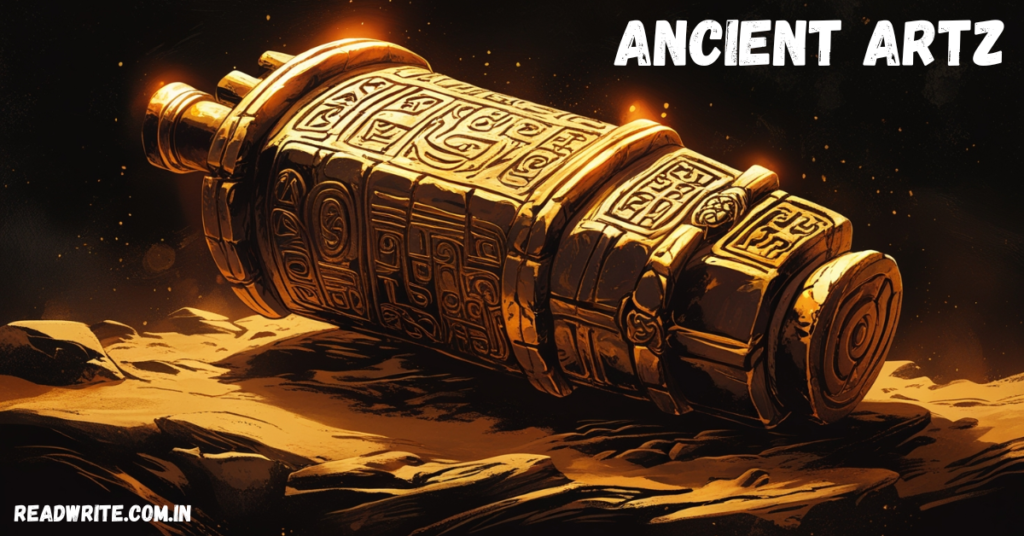Art is a window into the soul of a civilization, and the term “ancient artz” serves as a bridge connecting us to the creative essence of bygone eras. From the mesmerizing cave paintings of Lascaux to the grandeur of Egyptian pyramids, ancient art forms are rich repositories of culture, tradition, and ingenuity. This blog explores the multifaceted world of ancient artz, shedding light on its significance, evolution, and enduring legacy.
The Origin of Ancient Artz
The story of ancient artz begins in the prehistoric era, a time when humans first started to express themselves visually. Early artworks were predominantly functional, often linked to survival, spiritual beliefs, or community bonding. Key examples include:
- Cave Paintings: Found in places like Lascaux, France, and Altamira, Spain, these artworks depict animals, hunting scenes, and abstract symbols, offering a glimpse into prehistoric life.
- Venus Figurines: Small sculptures like the Venus of Willendorf represent fertility and human form, reflecting societal values and beliefs.
These early expressions marked humanity’s initial steps in documenting experiences and emotions, laying the groundwork for the complex art forms that followed.
Ancient Artz Across Civilizations
Each ancient civilization brought unique contributions to the world of art. Let’s delve into the artistic achievements of some prominent cultures:
1. Egyptian Art
Egyptian art is synonymous with grandeur and symbolism. From intricate hieroglyphics to monumental structures like the Great Sphinx and the Pyramids of Giza, Egyptian artists mastered the balance between realism and abstraction. Key features include:
- Stylized Figures: Depictions followed strict conventions, such as showing heads in profile while torsos faced forward.
- Symbolism: Colors, poses, and objects carried specific meanings, often tied to religion and the afterlife.
- Durable Materials: Stone, gold, and other materials ensured the longevity of their creations.
2. Greek Art
Ancient Greece marked the evolution of art towards naturalism and humanism. Greek artists celebrated the human form, emphasizing proportion, movement, and emotion. Noteworthy contributions include:
- Sculpture: Masterpieces like the Venus de Milo and Discobolus exemplify grace and dynamism.
- Pottery: Painted vases served both practical and decorative purposes, illustrating mythological and daily life scenes.
- Architecture: Structures like the Parthenon reflect an unparalleled understanding of harmony and aesthetics.
3. Indian Art
Indian art has deep roots in spirituality and storytelling. Ancient Indian artists excelled in sculpture, painting, and architecture, as seen in:
- Buddhist Art: Stupas, like Sanchi, and cave paintings at Ajanta depict Buddha’s life and teachings.
- Temple Architecture: Intricately carved temples like Khajuraho and Konark Sun Temple showcase religious devotion and artistic brilliance.
- Miniature Paintings: These detailed works capture moments from epics like the Ramayana and Mahabharata.
4. Chinese Art
Chinese ancient art reflects a harmonious blend of philosophy, nature, and aesthetics. Highlights include:
- Calligraphy: Regarded as the highest form of art, Chinese calligraphy conveys beauty through brushstrokes and rhythm.
- Porcelain: The famous blue-and-white ceramics demonstrate technical and artistic mastery.
- Landscape Paintings: These works emphasize the spiritual connection between humans and nature.
5. Mesoamerican Art
The art of ancient Mesoamerican cultures like the Maya, Aztec, and Olmec is both enigmatic and elaborate. Key elements include:
- Stone Carvings: Depictions of gods, rituals, and calendars carved into monuments and stelae.
- Ceremonial Artifacts: Jade masks and obsidian tools were not only functional but also symbolic.
- Architecture: Pyramids like Chichén Itzá embody engineering excellence and cosmological significance.
The Techniques Behind Ancient Artz
Ancient artists relied on innovative techniques to bring their visions to life. Despite limited tools and technology, their creativity was boundless. Common methods included:
- Engraving and Carving: Used for sculptures, inscriptions, and decorative motifs.
- Fresco Painting: Applying pigment to wet plaster, as seen in Minoan and Roman art.
- Metalwork: Crafting intricate designs in gold, silver, and bronze.
- Textile Weaving: Producing colorful fabrics with symbolic patterns.
These techniques required skill, patience, and a deep understanding of materials.
The Legacy of Ancient Artz
The influence of ancient artz extends far beyond its time, shaping modern art, architecture, and culture. Here are some ways it continues to inspire:
- Artistic Styles: Movements like the Renaissance revived classical Greek and Roman aesthetics.
- Cultural Identity: Traditional art forms preserve the heritage of communities worldwide.
- Innovations: Techniques like perspective and sculpture casting originated in ancient times.
Additionally, ancient artz serves as a valuable educational tool, helping us understand history, sociology, and human behavior.
Preservation and Challenges
Preserving ancient artz is crucial for future generations, but it faces numerous challenges:
- Natural Decay: Weather, erosion, and aging threaten fragile artifacts.
- Human Activity: Looting, vandalism, and urbanization pose significant risks.
- Climate Change: Rising temperatures and humidity accelerate deterioration.
Efforts by archaeologists, historians, and conservationists aim to protect these treasures through techniques like digital documentation, climate-controlled storage, and restoration projects.
Conclusion
Ancient artz is more than just a relic of the past; it’s a testament to human creativity, resilience, and the universal desire to communicate. By exploring and preserving these masterpieces, we not only honor our ancestors but also enrich our understanding of the world. Whether you’re an art enthusiast, historian, or curious learner, the journey through ancient artz is bound to leave you inspired and awed.

